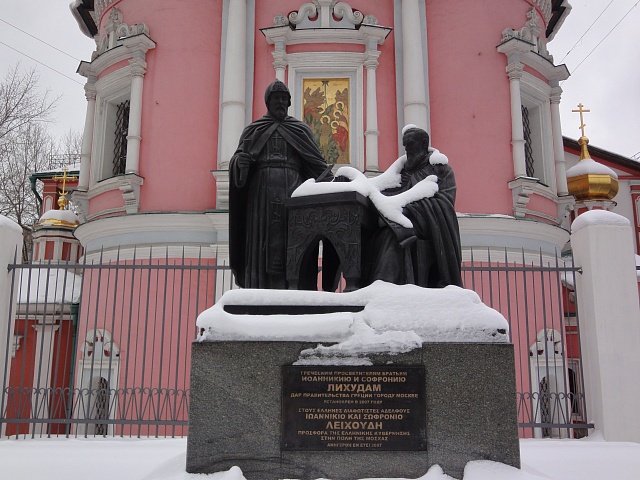The Elizabethan Bible is a Church Slavonic translation of the Bible, first published during the reign of Empress Elizabeth Petrovna. This text is still used for worship in the Russian Orthodox Church.
Early Slavic Bible translations
The first translation of Holy Scripture into Church Slavonic is attributed to Saints Cyril and Methodius. With the baptism of Rus, their translations penetrated from Byzantium. One of the most ancient manuscripts with biblical texts in Church Slavonic is the Ostromir Gospel of the 11th century.
The first complete (i.e., including all the canonical books of the Old and New Testaments) Slavic edition of the Church Slavonic Bible dates back to 1499. This Bible is called Gennadievskaya, as its publication was led by Archbishop of Novgorod Gennady (Gonzov). The Gennady Bible was handwritten. The very first printed edition of the Slavic Bible was published in 1581 at the initiative of the Lithuanian prince Konstantin Ostrog. This Bible is called Ostrog.
Beginning of the Elizabethan Translation
The history of the Elizabethan Bible begins with the decree of Peter I on the preparation of a new edition of Holy Scripture in Church Slavonic.
The publication was entrusted to the Moscow Printing House. But previously it was required to verify the existing Slavic text with the Greek version (translation of the Seventy Explanators), to find and correct inaccuracies in the translation and textual discrepancies. For this work, a scientific commission of directors was assembled. It included the Greek monks Sofroniy and Ioannikiy Likhudy (founders of the Slavic-Greek-Latin Academy in Moscow), as well as Russian clergy and scholars: Archimandrite Feofilakt (Lopatinsky), Fedor Polikarpov, Nikolai Semenov and others.

The Moscow Bible was the basis for editing - the first printed edition of the book in Moscow Russia (1663), the Ostrozh text (with few spelling corrections). The main Greek model for reconciliation was the Alexandrian Codex. However, in the process of work, they turned to Latin and Hebrew (Masoretic) translations, as well as to the comments of Western theologians. In the edited Slavic text, possible interpretations of Greek were indicated, and dark places were accompanied by comments from the patristic heritage. In 1724, the emperor gave permission to publish the book, but because of his premature death, the process dragged on - and for a long time.
Double check
During the reign of Catherine and Anna Ioannovna, several more commissions gathered to double-check the results of the work of Peter's directories. Each of them started the business from scratch. In addition, questions of discrepancies and lack of unity in Greek texts were sharply raised. It was not clear which option was considered the most authoritative.
The last - the sixth in a row - commission was assembled in 1747. It included Kiev hieromonks Gideon (Slonim) and Varlaam (Lyashchevsky). The guiding principle of the commission’s work was the following: the original Slavic text of the Moscow Bible was left without corrections if it could be found in at least one of the Greek versions. The result of the work of the sixth commission in 1750 was approved by the Holy Synod and was sent for confirmation to Empress Elizabeth Petrovna.
Elizabethan edition
The Elizabethan Bible was published only in 1751. The result of the work of Gideon and Varlaam was published in parallel with the original Slavic (Moscow) text. The notes were highlighted in a separate volume and almost equal in volume to the text of Scripture. The second edition of the Elizabethan Bible of 1756 differed from the first with additional marginal notes and engravings. Until 1812, the book was reprinted 22 more times. However, circulations were insufficient. In 1805, only ten copies of Scripture were issued to the entire Smolensk diocese. In addition, the Church Slavonic language of the Elizabethan Bible remained far from accessible to the masses. Educated clerics preferred the Vulgate (back in the early 19th century, Latin was the main language of instruction in the seminaries). Despite this, the Elizabethan translation of the Bible, to this day, enjoys authority in the Orthodox community as a liturgical text.